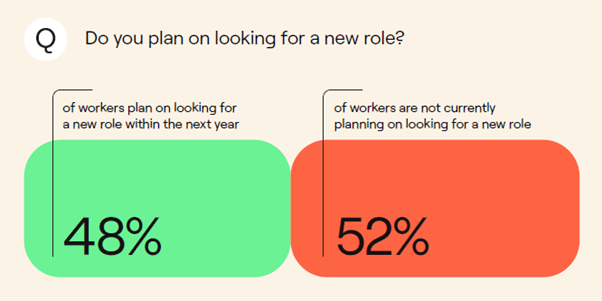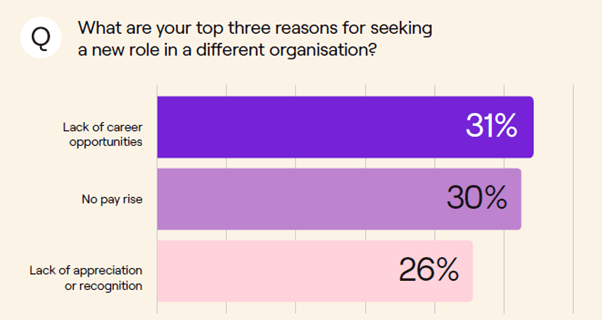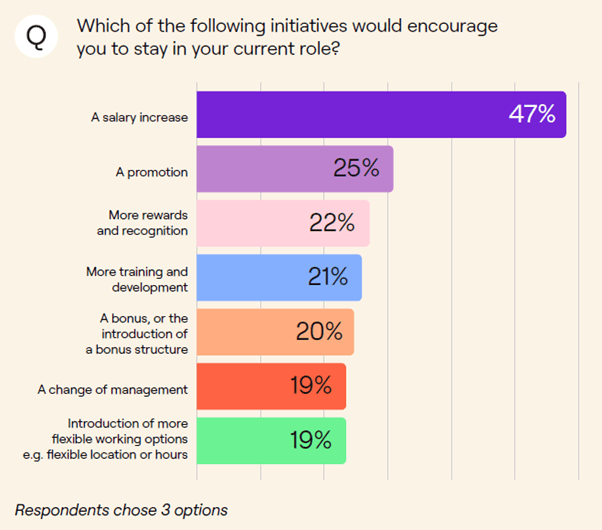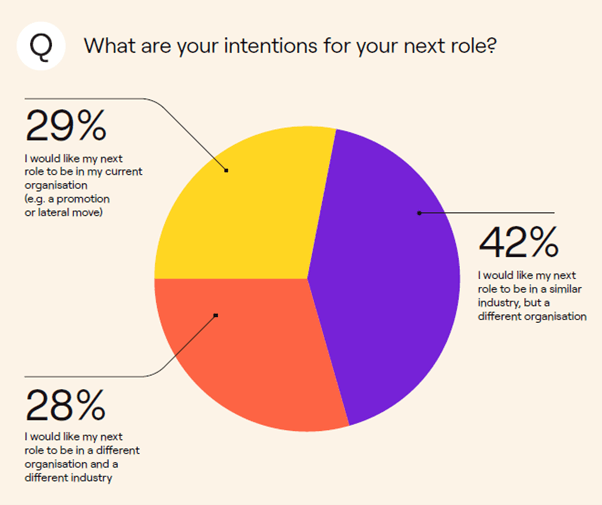What is The Great Resignation and what does it mean for your business?
After living through a global pandemic full of uncertainty, locked in our homes and deprived of much needed time with our loved ones, it’s no wonder we are taking a moment to take stock of our lives and priorities. Already in Europe and the US, The Great Resignation has made its debut and experts predict…
After living through a global pandemic full of uncertainty, locked in our homes and deprived of much needed time with our loved ones, it’s no wonder we are taking a moment to take stock of our lives and priorities.
Already in Europe and the US, The Great Resignation has made its debut and experts predict it will emerge in Australia in March 2022. According to the World Economic Forum, 41% of employees around the globe plan to leave their jobs this year. In Australia, this is closer to 50% according to a recent study by Employment Hero .

Why are people resigning?People are reflecting on what their lives were before and during the worst of the pandemic. As we come out of the pandemic, many are reassessing their priorities and are coming to the common consensus that opportunities are out there for the taking. There is no more settling for what is given to you.
What does this mean?
People want more.
There is a multitude of reasons why people are looking to move roles. The top four reasons why people want to leave their current roles are:
1. Lack of career opportunities
2. No pay rises
3. Lack of appreciation or recognition
4. Poor company culture

Interestingly, those aged 25-34 were more likely to suggest that ‘lack of career opportunities’ was one reason why they wished to find a new role. ‘Lack of appreciation or recognition’ was most common among those aged 45-54.
1 in 5 people selected ‘poor company culture’ as being one of the reasons they were looking for a new role.
How will The Great Resignation affect businesses?
Recent reports show that it can cost approximately 33% of an employee’s annual salary to replace them. This does not include indirect costs such as:
- Lost productivity. This includes time spent training the new employee, work that is left incomplete until the role is filled, work that is incomplete due to current employees taking on a larger workload
- Loss of knowledge and experience the ex-employee takes with them when they leave
- Negative effects on staff morale
- Time lost in finding the new employee and the time it takes for the new employee to adjust to their new role
How can we retain our employees?
To retain your workforce and win new recruits against your competitors, your business will need to seriously consider their employees’ and prospective employees’ priorities.
The graph below shows initiatives that will encourage employees to stay in their current positions:

It is not enough to simply talk about these initiatives. Employers will need to embody and implement their promises. Purely transactional relationships will not be enough to retain employees. Employees want to be taken seriously. Otherwise, they will seize other opportunities.
Flexible work is now an expectation for many
An alarming 40% of people surveyed said they would consider an overseas job in the pursuit of travel. Therefore, offering remote work as an option could help to retain some of these employees.
Almost 20% of people surveyed said they would be more likely to stay in their current positions if they were offered flexible working options.
When looking for a new role, flexible working is the third-highest priority among those surveyed with 28% saying this is among their top priorities.
Where remote working is not possible, providing opportunities where your employees can prioritise their personal lives will be very much appreciated.
How can we attract new employees?
The Great Resignation is a double-edged sword. There is risk and there is opportunity.
The most attractive attributes of a new role are:
- Salary
- Flexible working options
- Rewards and recognition programs
- Permanent employment
Highlight these in your job ads and conversations when trying to sell a role to a new employee. Here are our tips for writing an effective job description .
The pie chart below shows peoples intentions for a new role:

To give your business the best chance of hiring a suitable applicant, consider expanding your search to include those from other industries. Hiring diversely will introduce new perspectives and ideas into your business. Change is key to differentiating your business against your competitors.
Employment Hero suggests that it would be cheaper to hire someone and invest in upskilling them, rather than waiting for the perfect applicant to come along. You will lose productivity in the time it takes for you to wait for this unicorn applicant!
Our advice would be to hire for behavioural and cultural fit. Skills can always be taught. Plus, teaching someone will show that you are devoted to their growth and development (hint: training and development is one of the top initiatives that would encourage employees to say in their current roles).
To read the full report, click here .
If you’re looking for talent management solutions, contact us today by filling in the form on this page. Our consultants will be in contact and are ready to help you navigate the new market.







